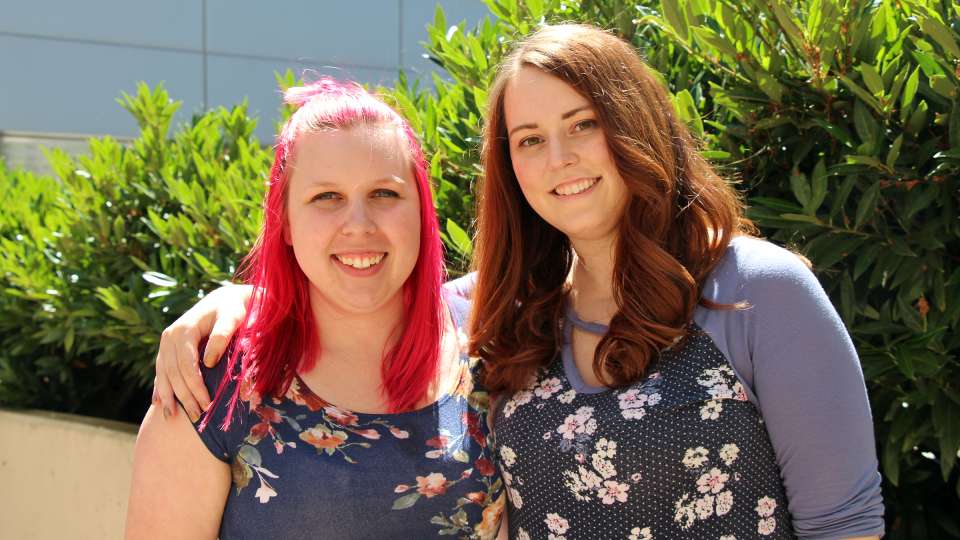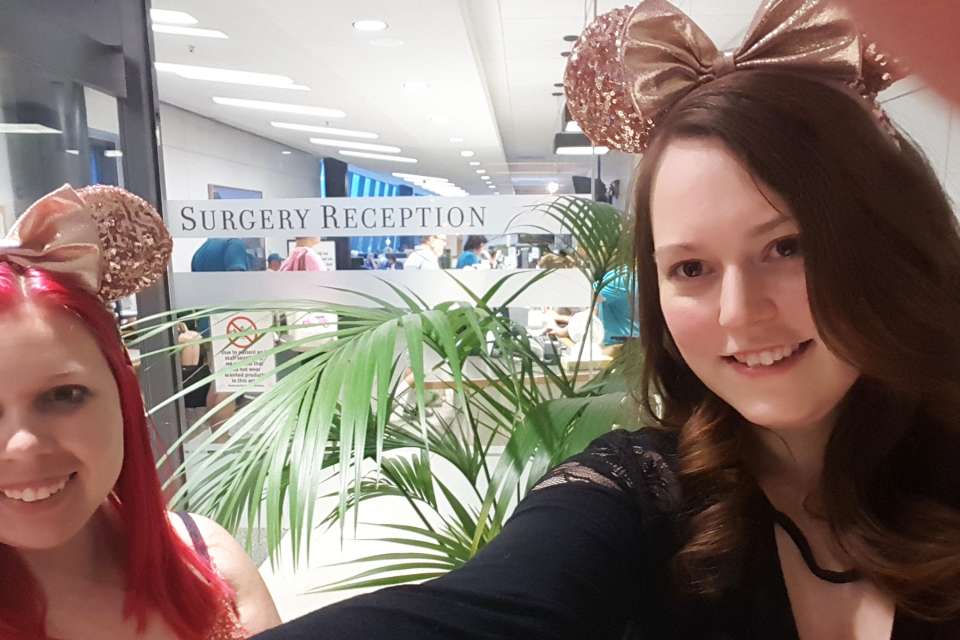These Young Moms Were Strangers—Until One Needed a Kidney Transplant

The first Facebook message Nicole Langley sent Jayme Jahns was about blood.
“Hey, I think I’m the same blood type as you,” wrote Langley on February 8, 2018.
Jahns replied, and just days later Langley was at University of Washington Medical Center getting tested to be a living kidney donor for Jahns.
Blood, it turns out, was crucial to their relationship.
A match made on Facebook
“In January, I found out I had end-stage kidney failure. I was terrified. When my nephrologist told me that, I was crying in his office. I thought I was going to die. I have a 2-year-old and want to be here for her,” Jahns says.
Jahns has IgA nephropathy, a type of kidney disease with no clear cause. If she couldn’t find a kidney donor, she would have to begin dialysis for the first time as a 32-year-old mother.
Even with blood relatives, the chance of being a perfect match is slim; for example, many siblings only have a 25 percent chance. And after having so many people tested without success, Jahns was running out of time. Her kidney disease was so severe that she wheezed when she walked.
When Jahns learned none of her family members would be able to help her, she took to the internet, desperate to find someone, anyone, who might be willing to make such a big sacrifice for a stranger.
Though a person can get along fine with a single kidney, the donation process carries risks simply because it involves surgery. Research has shown, though, that organs from living donors last longer for transplant recipients than organs from people who have recently died.
After Jahns posted about her situation to a moms group on Facebook, three women offered to get tested to see if they were a match. Langley was one of them.
Before a living kidney donation can take place, testing is done to see if the recipient’s immune cells treat the donor’s as intruders and attack. If that happens, the donation can’t go through because the organ will quickly be rejected by the recipient’s body.
Jahns was hopeful that Langley would be a match—but was prepared in case not.
But it turned out that Langley—a complete stranger, someone Jahns had never spoken to before that February 8 Facebook message—was a perfect match.
On July 18, Jahns went into surgery to receive the kidney that would save her life.
An uncanny connection
“I’m going to cry talking about it,” Langley says and, indeed, tears up. She is sitting across the table from Jahns, in the cafeteria at University of Washington Medical Center. It’s been a week and a day since surgery.
Though the two women have known each other only since February, they share the ease of two people who have been close friends for years—even occasionally finishing each other’s sentences. Eerily, they both grew up and still live in Graham, Washington, never knowing the other existed until now. Their families, too, have gotten to know each other, and both of their mothers met recently.
“My mom said it’s like each of them gained an extra daughter,” Langley says.
Langley, like Jahns, is also a mom herself, to three girls. Her understanding of the need to be there for your children is what compelled her to see if she was a good donor candidate.
But she also had other reasons for her decision. Since first finding out about Jahns, she’d felt an unexplainable sense of familiarity with her and knew, somehow, that everything would work out.
“I’m not crazy religious, but in the back of my mind the whole time I had this really strong connection. I think it had to have been God at that point, telling me, ‘Things are going to go right, you’re the right person and you need to do it.' It was never a question,” she says.
After a pause, she adds, laughing, “I filled out the application before I even told my husband about it.”

A second chance
When surgery day dawned, Jahns and Langley spent the time before pre-op taking selfies in Minnie Mouse ears—to represent their shared love of Disneyland.
Since the procedure involves transplant of a living donor’s organ, the surgeries took place around the same time, with a medical team transporting Langley’s spare kidney to Jahns’ operating room as soon as it was removed. Both surgeries were successful and the women were moved to hospital rooms two doors down from each other.
Jahns noticed the improvement in her health almost immediately. She woke up after surgery feeling the best she’s felt in a long time.
It was a welcome relief. Jahns is used to being sick. Along with kidney disease, she also has a genetic blood clotting disorder called protein S deficiency, which has caused blood clots in her lungs and legs before. This disorder has complicated her recovery by causing excessive internal bleeding, a pool of blood that sits as a heavy mass in her torso. It should reabsorb on its own, though, she says.
Recovery wasn’t as painless for Langley. She’d never had surgery before, and pain management proved difficult. At one point, doctors gave her an emergency epidural, she says, but that caused her blood pressure to drop dangerously low.
“It’s hard to explain that feeling of guilt you have, but at the same time, she reassured me it was worth it to see me healthy,” Jahns says.
Langley, however, is quick to downplay her own pain—and instead focuses on the second chance her donation gave to her new friend.
“The next day, Jayme posted a picture on Facebook, and I was like, ‘Oh my gosh, your cheeks are rosy! You look amazing.’ It was so amazing to see how quickly the change happens,” she says.
A future, together
Jahns and Langley are both home now, continuing to recover—and undoubtedly taking advantage of the fact that they live in the same city. While still at the hospital, they visited each other’s rooms as soon as they could walk. When Langley was discharged before her, Jahns grew lonely.
“I felt like a part of me was missing,” she says.
As soon as she has recovered enough, Jahns can’t wait to travel again, something she was restricted from doing when she was ill. She plans on taking Langley and her family on a trip to Six Flags for their “kidney-versary” next July, and knows she has gained a lifelong friend.
Jahns explains that she also hopes to join Team Transplant, a group of transplant recipients who train for races and other fitness events together and encourage each other to live healthy, active lives.
“We can run a marathon together in two years,” Langley jokes.
As for Langley, she is grateful for the broadened perspective the experience has given her, and hopes to become an advocate for living kidney donation.
“You don’t realize how many people are on the transplant waiting list. If my impact makes someone else choose to try to be an organ donor, that would be unbelievable,” she says.
But, in the meantime, some smaller changes may be in order.
“I wasn’t an organ donor before this,” Langley realizes, shooting a surprised glance at Jahns. “I’ve got to get my driver’s license changed!”
According to the National Kidney Foundation, there are around 100,000 people waiting for a kidney transplant. Thousands of people become too sick for transplant while they are on the waiting list, and thousands more die before they can receive a transplant. Learn more about living kidney donation.

 Healthy ideas for your inbox
Healthy ideas for your inbox





